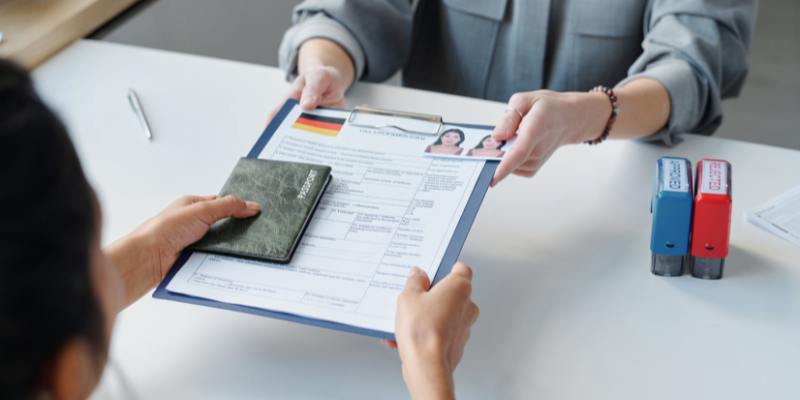How To Apply For A Retirement Visa In Peru: Key Steps
Have you dreamed of retiring abroad and immersing yourself in a vibrant culture? Peru offers retirees stunning landscapes, rich traditions, and affordable living. But how can you secure a retirement visa while already living in Peru? This step-by-step guide simplifies the process, helping you navigate eligibility requirements, essential documents, and application steps.

Whether you're drawn to Lima's bustling city life or Cusco's tranquil charm, obtaining a retirement visa opens the door to endless possibilities. Ready to make Peru your home? Let's explore how to start your retirement journey in this beautiful South American country.
Understanding The Retirement Visa In Peru
Peru's retirement visa, also known as the Rentista Visa, is specially designed for individuals with a stable source of passive income. This visa enables retirees to live in Peru without employment, making it ideal for those who want to retire in a beautiful, culturally rich country.
Key Benefits:
• Residency Rights: The Rentista Visa allows you to live in Peru indefinitely. It is renewable, so you won't have to reapply constantly.
• Tax Exemption: One of the significant benefits of the Rentista Visa is that income sourced from abroad, such as pensions or investments, is exempt from Peruvian taxes.
• Travel Flexibility: The visa allows one to enter and exit Peru freely, making travel and enjoying retirement easier.
Eligibility Requirements
Before applying for a retirement visa, you must meet the following requirements:
1. Proof of Passive Income: You must provide evidence of at least $1,000 in passive income each month to be eligible for the Rentista Visa. An additional $500 per dependent is required if you're bringing dependents. This income can come from pensions, investments, or rental income.
2. Valid Passport: After the date of application, your passport must be valid for at least six months.
3. Background Check: You must have a clean and clear criminal history in your nation of origin. Make sure it's apostilled or legalized for use in Peru.
4. Insurance: You must have health insurance for your visit to Peru. This could be international health insurance or a local Peruvian plan.
Documents You'll Need

Before beginning your application process, gather the following documents:
• Passport: Original passport and copies.
• Proof of Passive Income: This can include pension statements, bank letters, or investment documentation.
• Criminal Record Check: This must be apostilled or legalized.
• Photos: Recent passport-sized photos.
• Application Completed: Complete the visa application form thoroughly.
• Health Insurance Documentation: Proof of coverage during your stay in Peru.
Steps To Apply For a Retirement Visa In Peru

To apply for a retirement visa, you need to do the following:
1. Enter Peru on a Tourist Visa: Most individuals begin by entering Peru on a tourist visa. This helps and allows you to stay in the country for up to 183 days. During this time, you can start applying for a retirement visa.
2. Gather the Required Documents: Ensure you've gathered all the required documents. Before submitting them, you must ensure they are correctly apostilled or legalized from your home country.
3. Submit Your Application: Visit the Peruvian immigration office (Migraciones) or apply online through the official website. Submit all your documents along with the visa fee. Be prepared for possible delays and organize all your documents for quick submission.
4. Attend an Appointment: You may need an in-person appointment at Migraciones for verification purposes. Bring all original documents to this appointment. Sometimes, you may be required to provide additional documentation or information.
5. Await Approval: The approval process can take several weeks. While waiting for approval, you'll receive a temporary residency card allowing you to stay in Peru legally.
6. Receive Your Retirement Visa: After your visa is approved, you'll be issued your Rentista Visa. This grants you permanent residency status, which you can renew indefinitely.
Tips For a Smooth Application Process
• Work with an Immigration Specialist: A local immigration expert can be invaluable in guiding you through the process. They ensure all your documents are in order.
• Plan Financially: Ensure your monthly income meets the required threshold and is easy to verify. It would help if you had documentation ready to prove the legitimacy of your income sources.
• Stay Organized: Keep digital and physical copies of all your documents. Consider creating a checklist to ensure you get all the steps and documentation.
• Learn Basic Spanish: Although many officials in Peru speak English, learning the basics of Spanish will make your interactions with officials smoother and improve your experience in the country.
Additional Considerations After Receiving Your Retirement Visa
Once your retirement visa is approved, there are a few more steps to ensure you're fully integrated into Peru's system:
• Register with SUNAT: Peru's tax authority, SUNAT, requires you to register and obtain a Peruvian tax identification number (RUC). This will be essential for your financial matters.
• Apply for a National ID (DNI): After receiving your retirement visa, you must apply for a DNI (Documento Nacional de Identidad), which is necessary for accessing services and other official activities.
• Stay Up to Date: Keep track of your visa status and apply for renewals or updates as necessary.
Conclusion: Living Your Retirement Dreams In Peru
Peru offers retirees a fantastic quality of life with its low cost of living, rich culture, and diverse geography. From the high-altitude city of Cusco to the stunning beaches along the Pacific coast, retirees can explore a variety of environments while living comfortably.
Whether you want to enjoy Lima's bustling energy or the Sacred Valley's serenity, Peru provides numerous opportunities to enjoy your retirement years. With a retirement visa in hand, you'll be able to immerse yourself in all the wonderful experiences Peru has to offer.
Related Posts
- Is A Car Loan Interest Tax Deductible?
- How To Protect Your Banking App If Your Phone Is Stolen
- Top 8 Strategies To Succeed In A Debt Management Program
- Green Investments: How To Align Your Portfolio With Your Values
- How Important Is Reconciliation For Tax Returns?
- How To Start A Digital Marketing Business: A Concise Guide